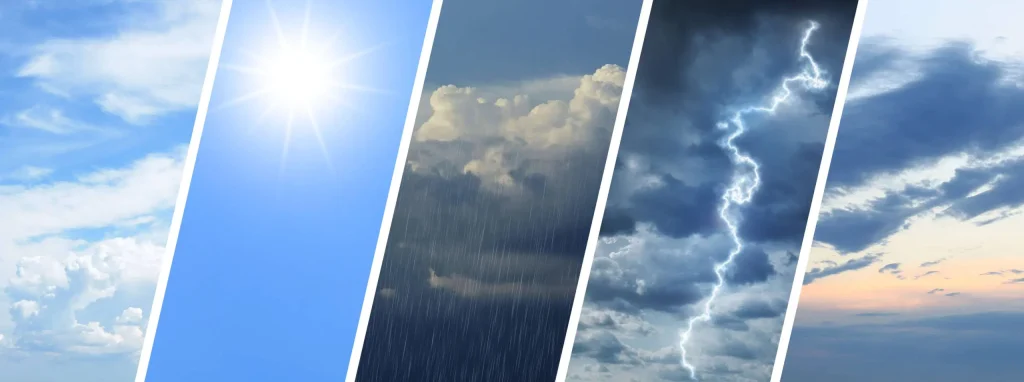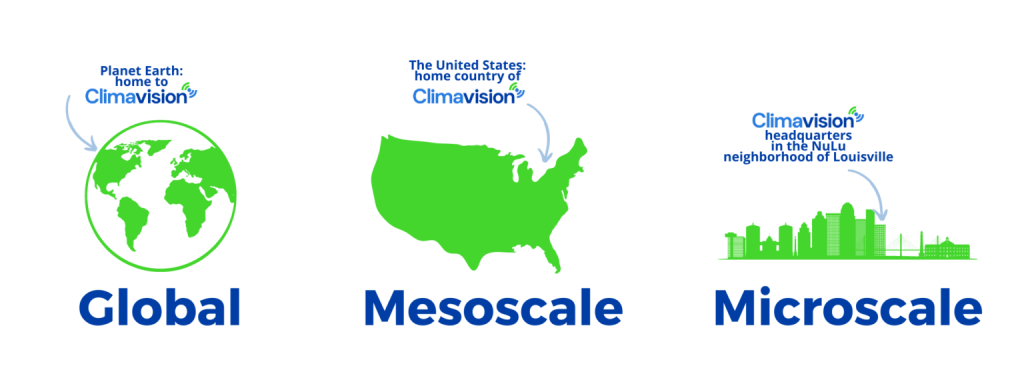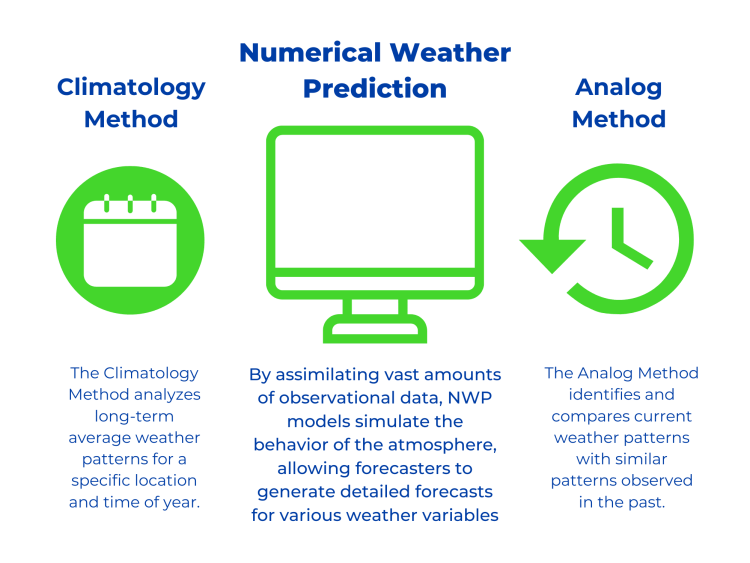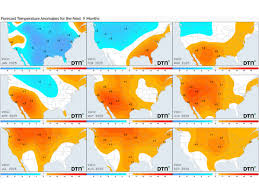Accurate weather forecasting is essential across sectors, guiding critical decisions in agriculture, transportation, emergency management, and everyday planning. From mitigating natural disaster impacts to optimizing business operations, precise forecasts enhance safety and efficiency.
Conversely, poor forecasting can result in economic setbacks, safety risks, and major disruptions. At the core of reliable predictions are weather forecast models—advanced computer algorithms that simulate atmospheric behavior using real-time data and physics-based equations.

This guide delves into the various types of forecasting models, explains the reasons behind differing predictions, and highlights today’s most accurate tools. Whether you’re a professional, policymaker, or weather enthusiast, understanding these models is key to navigating the evolving landscape of weather science in 2025 and beyond.
Read More: The Ultimate Guide to Weather Forecast Models in 2025
Main Takeaways
In 2025, weather forecast models have become more sophisticated, data-driven, and essential than ever before. These models, powered by advanced algorithms and high-performance computing, are the backbone of modern meteorology.
They provide critical insights that influence decisions in industries ranging from aviation to agriculture. Understanding the differences between short-range, medium-range, and long-range models helps explain why forecasts may vary across platforms.
Moreover, the integration of satellite data, machine learning, and real-time analytics has significantly improved forecast precision. This guide unpacks the strengths and limitations of leading models and emphasizes the importance of choosing the right model for specific needs.
Staying informed about how these models work is vital for making smarter, weather-sensitive decisions in our data-centric world.
What Are Weather Forecast Models?
Weather forecast models are advanced computational systems designed to simulate and predict atmospheric behavior using complex mathematical equations.
These models assimilate vast amounts of data—from ground-based observations and satellite imagery to radar scans and meteorological instruments—to construct detailed numerical representations of the Earth’s atmosphere.
By analyzing this data through physics-based algorithms, forecast models can project weather conditions across various geographic regions and time horizons. These simulations form the foundation of modern weather forecasting, enabling more accurate and timely predictions that support critical decision-making across sectors.
Types of Weather Models

Global Models
Global weather models simulate atmospheric conditions across the entire planet. They are essential for long-range forecasting and tracking large-scale weather systems. Examples include the Global Forecast System (GFS) by the U.S. and the European Centre for Medium-Range Weather Forecasts (ECMWF) model. These models offer broad coverage but at a lower resolution compared to regional models.
Regional Models
Focused on specific geographic areas, regional models provide higher spatial and temporal resolution. They excel at short-term forecasts and capturing localized phenomena like thunderstorms or sea breezes. The North American Mesoscale (NAM) and the High-Resolution Rapid Refresh (HRRR) are widely used regional models.
Ensemble Models
Ensemble models run multiple simulations with slightly varied initial conditions. This approach helps assess uncertainty and provides a range of possible outcomes. It’s especially useful for predicting severe weather events or making probabilistic forecasts.
Nowcasting Models
These are ultra-short-term models used for real-time forecasting, typically within a 0–6 hour window. They leverage radar, satellite, and sensor data to track fast-evolving weather like heavy rainfall or storm development.
Climate Models
While not used for daily forecasts, climate models project long-term atmospheric trends. They help study climate variability, global warming, and the potential impact of human activity on future weather patterns.
Why Forecasts Vary Depending on the Weather Model
Weather forecasts can differ significantly depending on the model used, and this variation stems from how each model interprets atmospheric data and simulates future conditions.
Every forecast model relies on its own set of assumptions, resolution settings, and data assimilation techniques, which influence how it processes the constantly changing state of the atmosphere.
Some models prioritize global patterns, while others focus on regional details—leading to discrepancies, especially in localized forecasts. Additionally, the timing of model updates and the type of data inputs can cause shifts in predictions.
These differences highlight the complex nature of atmospheric science and explain why comparing multiple models often yields a more balanced and reliable weather outlook.
What Is the Most Accurate Weather Forecast Model?
The accuracy of a weather forecast model depends on multiple variables, including geographic location, forecast duration, and the specific atmospheric events being analyzed.
Among global models, the European Centre for Medium-Range Weather Forecasts and the Global Forecast System are widely regarded for their reliability in tracking large-scale weather systems. However, as the forecast period extends, predictive accuracy tends to decline due to the inherently dynamic nature of the atmosphere.
Climavision, a leader in weather intelligence, enhances forecast precision through cutting-edge numerical weather prediction (NWP) techniques and proprietary AI-driven modeling.
While NWP remains the gold standard in short- to medium-range forecasting, Climavision’s AI technology extends predictive insights up to two years in advance.
This powerful combination of science and innovation delivers high-resolution, hyper-local forecasts—helping industries, emergency responders, and communities make proactive, weather-informed decisions with confidence.
Three Main Types of Weather Forecasting

Climatology Method
The climatology method leverages historical weather data to predict future conditions by analyzing long-term averages for a given location and time of year. It provides a general overview of typical weather patterns but falls short in addressing short-term fluctuations or unusual weather events.
As such, this method is less effective for forecasting extreme or outlier conditions that deviate from the norm.
Analog Method
The analog method compares current weather patterns with those observed in the past to identify similarities. By examining how previous weather events led to specific outcomes, forecasters can anticipate future conditions.
This method relies heavily on historical data and the forecaster’s expertise in selecting appropriate analogs, making it somewhat subjective and limited in its predictive scope.
Numerical Weather Prediction (NWP) Modeling
Numerical Weather Prediction (NWP) modeling stands as the most advanced and reliable method in weather forecasting. NWP uses complex mathematical equations to simulate atmospheric behavior based on the fundamental physical laws that govern weather systems.
By assimilating vast datasets from satellites, sensors, and weather stations, NWP models provide highly detailed and accurate forecasts for a wide range of weather variables.
Climavision utilizes cutting-edge NWP techniques, integrating Dalton AI to process enormous datasets at remarkable speeds.
This advanced technology allows for the rapid production of precise forecasts, empowering businesses, communities, and individuals with the insights needed to make informed decisions and safeguard their interests.
Advancements in Weather Forecasting Models
In recent years, weather forecasting models have seen transformative advancements, driven by innovations in technology, data collection, and computational power. These developments have significantly improved the precision, reliability, and range of weather predictions, transforming industries that depend on accurate forecasts.
High-Resolution Models
One of the key advancements has been the evolution of high-resolution models. Traditional models operated at relatively low spatial resolution, but modern models can simulate weather conditions with remarkable detail, even down to specific neighborhoods or microclimates.
High-resolution weather models can predict small-scale phenomena like thunderstorms, heavy rain, and local temperature variations with greater accuracy, providing valuable insights for sectors such as agriculture, disaster management, and urban planning.
Artificial Intelligence (AI) Integration
The integration of Artificial Intelligence and Machine Learning has revolutionized how weather models process and interpret vast amounts of data. AI algorithms now help identify patterns, optimize data assimilation, and predict weather outcomes with greater speed and accuracy.
These models can even improve their predictions over time by learning from past weather events, enhancing forecasting capabilities and extending prediction windows.
Ensemble Forecasting
Ensemble forecasting techniques have also seen significant advancements. Rather than relying on a single forecast model, ensemble forecasting runs multiple simulations with slightly different initial conditions. This approach accounts for uncertainties in weather predictions and helps create a range of possible outcomes. By aggregating these results, ensemble models provide more reliable and probabilistic forecasts, which is particularly useful for forecasting extreme weather events, such as hurricanes or heavy snowfall.
Climate Modeling for Long-Term Predictions
Another notable advance is the use of climate models for longer-term weather forecasting. Traditionally, weather models focused on short-term predictions, but climate models have allowed meteorologists to predict seasonal and even annual trends with greater confidence.
These models integrate long-term climate data, like sea surface temperatures and atmospheric pressure patterns, to provide forecasts for periods ranging from weeks to months, helping industries plan for larger seasonal trends.
Data Assimilation and Satellite Technology
Advancements in satellite technology have expanded the range and accuracy of observational data used in weather forecasting. Modern satellites provide real-time data on atmospheric conditions, sea surface temperatures, and cloud formation, which are essential inputs for forecasting models.
Additionally, improvements in data assimilation techniques, which combine observational data with forecast models, have further refined predictions, reducing errors and improving forecast accuracy.
Supercomputing Power
The computational power available for weather modeling has exponentially increased, allowing for more complex simulations and faster processing times.
Supercomputers can now simulate highly detailed atmospheric conditions over extended periods, providing meteorologists with more accurate and timely weather predictions. This capability has opened the door to increasingly sophisticated models that can handle vast datasets and complex weather systems.
Protect Your People and Property With More Accurate Weather Forecasts
Accurate weather forecasts are essential across various industries and communities to protect lives, preserve property, and ensure business continuity.
Sectors such as agriculture, transportation, logistics, energy utilities, commodity trading, and emergency management rely heavily on precise weather data to make informed decisions and minimize risks.
To harness advanced climate technology and access real-time, reliable weather forecasts, request a demo from Climavision.

Our state-of-the-art weather insights and technology empower businesses and communities to proactively prepare for weather challenges, enhance safety protocols, and streamline operations, ensuring a resilient future in the face of unpredictable conditions.
Frequently Asked Questions (FAQs)
Why are accurate weather forecasts important?
Accurate weather forecasts are crucial for protecting lives, minimizing property damage, and ensuring the smooth operation of industries like agriculture, transportation, and emergency management. They allow businesses and individuals to plan and prepare for weather-related events, reducing risks and costs.
How do weather forecasting models work?
Weather forecasting models use advanced mathematical equations to simulate atmospheric conditions based on data collected from weather stations, satellites, radar, and other sources. These models predict weather patterns and conditions by processing vast amounts of data and running simulations of the Earth’s atmosphere.
What are the most accurate weather forecast models?
Global models like the ECMWF (European Centre for Medium-Range Weather Forecasts) and the GFS are known for their accuracy in predicting large-scale weather patterns.
Advanced technologies like Numerical Weather Prediction (NWP) models, Artificial Intelligence (AI), and machine learning further enhance the accuracy of forecasts, especially for short-term and localized predictions.
How can I access accurate weather forecasts for my business or community?
Businesses and communities can access real-time, precise weather forecasts through advanced weather technology providers like Climavision. By leveraging cutting-edge forecasting tools, such as AI-enhanced models and NWP techniques, you can stay ahead of weather-related challenges and make better-informed decisions.
How do weather forecasts affect industries like agriculture or transportation?
Accurate weather forecasts are essential for industries like agriculture and transportation to manage risks and optimize operations. In agriculture, forecasts help determine the best times for planting, irrigation, and harvesting.
In transportation, forecasts allow companies to avoid hazardous conditions, minimizing delays and ensuring safety.
Can weather forecasting models predict extreme weather events like hurricanes and tornadoes?
Yes, weather models have become increasingly effective at predicting extreme weather events. Advanced forecasting systems provide early warnings for hurricanes, tornadoes, and other severe weather conditions, giving communities and businesses time to prepare, evacuate, or take necessary precautions.
Conclusion
The ability to access precise and reliable weather forecasts has become a cornerstone of proactive risk management and safety across all sectors. As weather events grow more unpredictable and impactful, having the tools to anticipate changes in atmospheric conditions can make the difference between mitigation and disaster.

